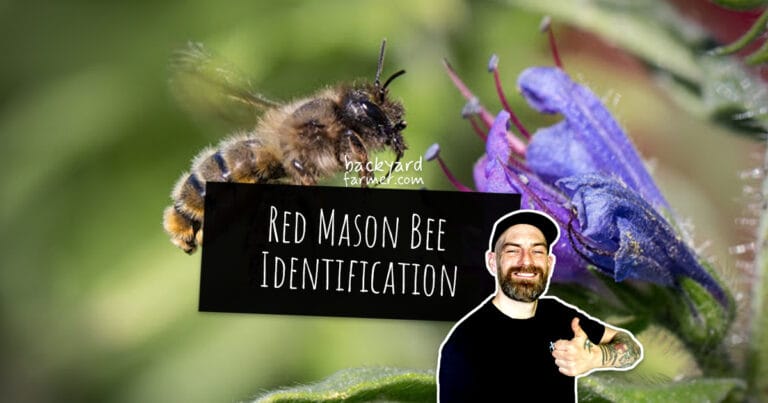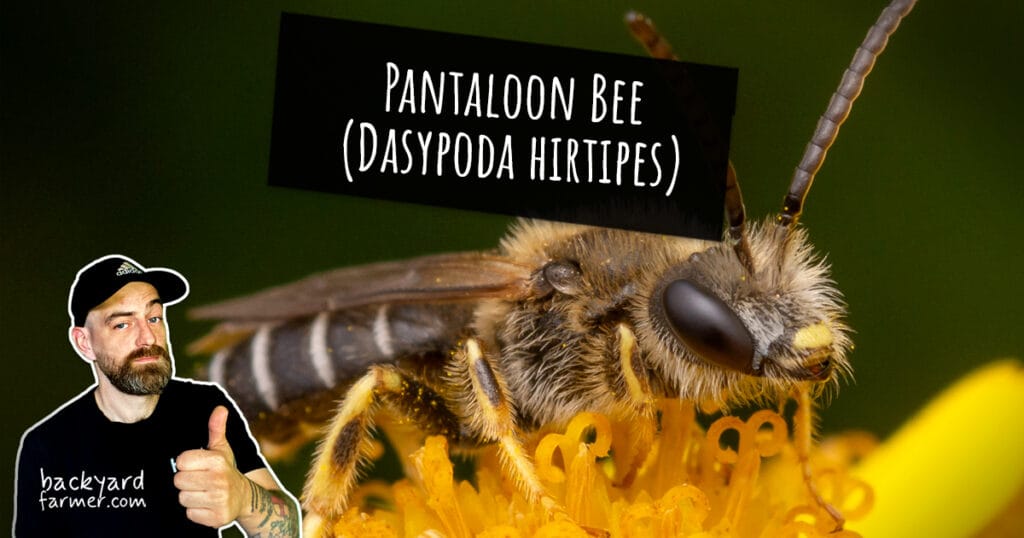Table of contents
🐝 Introduction
The Red Mason Bee (Osmia bicornis) is a solitary bee species found all over the UK. It’s one of the earliest bees to emerge in spring and plays a key role in pollinating fruit trees, wildflowers, and early crops. With its rust-red thorax, calm nature, and incredible pollination power, it’s a proper ally for gardeners.
That said, habitat loss, urban sprawl, and climate change are putting pressure on these bees. This guide shows you how to spot a Red Mason Bee, distinguish it from similar species, and take action to help it thrive.

🐝 How to Identify the Red Mason Bee
At a glance, the Red Mason Bee might be mistaken for a small bumblebee, but it has some clear features. Look for its ginger-red furry thorax, black shiny abdomen, and compact build that’s perfect for carrying pollen.
🔍 Physical Characteristics
- Female – 10–12 mm long; gingery thorax, dark abdomen, and strong mandibles for nest-building.
- Male – 8–10 mm; longer antennae, paler face, and usually emerges earlier in spring.
🔎 Identification & Key Facts
| Attribute | Details |
|---|---|
| Common Name | Red Mason Bee |
| Latin Name | Osmia bicornis (formerly Osmia rufa) |
| Size | 8–12 mm |
| Location | Found across England, Scotland, and Wales |
| Active Months | March – June |
| Habitat | Gardens, orchards, wildflower patches, hedgerows |
| Nesting Behavior | Solitary; nests in bee hotels, hollow stems, and old walls |
| Social Behavior | Solitary |
| Flora & Fauna | Apple, cherry, hawthorn, dandelion, lungwort |
| UK Status | Common, but in local decline |
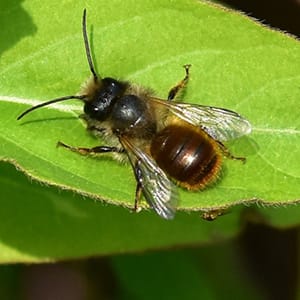
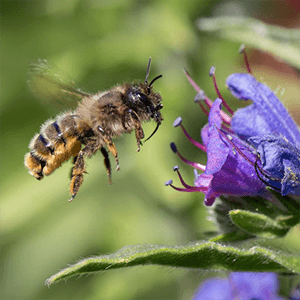
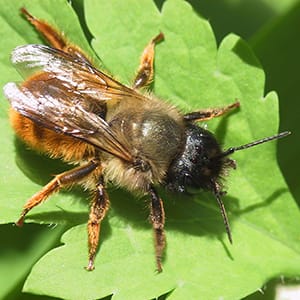
🐝 Similar Species to Watch For
The Red Mason Bee can be confused with other bees. Here’s how to tell them apart:
- Tawny Mining Bee (Andrena fulva) – Brighter orange, nests underground.
- Leafcutter Bee (Megachile spp.) – Broad-headed and known for cutting circles from leaves.
- Common Carder Bee (Bombus pascuorum) – Fuzzier, rounder, and lives in social colonies.
🕵️♂️ Want to improve your bee ID skills? Check out our Bee Identification Guide.
🌼 Why the Red Mason Bee Matters
When it comes to pollination, the Red Mason Bee is a solitary superstar. Unlike hive-dwelling honeybees, these little grafters visit far more flowers and work more efficiently — especially on fruit trees and spring blooms. One female alone can pollinate thousands of blossoms.
They follow a fascinating lifecycle — emerging in spring, mating, then building mud-lined chambers for their eggs. Each chamber is stocked with pollen to feed the developing bee until it hatches the following year.
They don’t make honey or live in hives, so they’re non-aggressive and rarely sting. That makes them ideal for gardens, schoolyards, and balconies. But they still need our help — loss of habitat and chemical exposure are reducing their numbers.
❓ FAQ
Only females can sting, and only if they’re seriously provoked. They’re very gentle and safe around children and pets.
They prefer hollow stems, bamboo tubes, bee hotels, and small gaps in old brickwork.
Not officially, but they are under pressure — especially in urban areas and new developments.
Usually between late March and early April, depending on how warm the spring is.
They feed on nectar and collect pollen from early spring flowers like dandelions, hawthorn, apple blossom, and lungwort.
🌻 How You Can Help
🪻 Plant Bee-Friendly Flowers
Choose native plants that flower early. Great choices include lungwort, apple blossom, blackthorn, hawthorn, daisies, and dead nettle.
🚫 Avoid Harmful Pesticides
Skip products with neonicotinoids, glyphosate, or broad-spectrum insecticides. These chemicals linger in the soil and harm pollinators.
🏡 Provide Nesting Spaces
Set up a bee hotel with tubes 6–8 mm wide and at least 15 cm deep. Mount in a sunny, sheltered spot, at least 1 metre off the ground. Replace or clean tubes yearly to prevent disease.
Dont forget to check out this article from out friends at the WWF – Tips on how to be bee Friendly.
